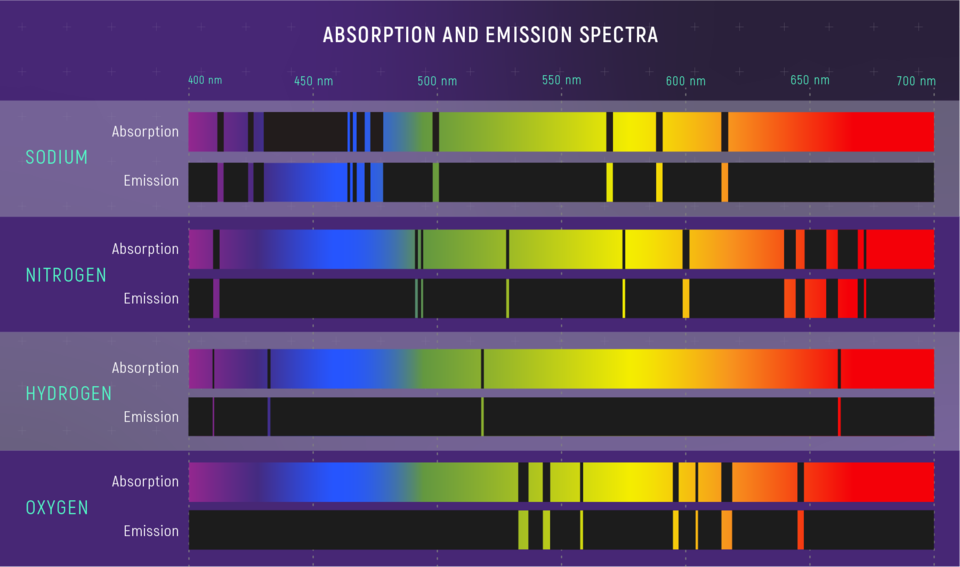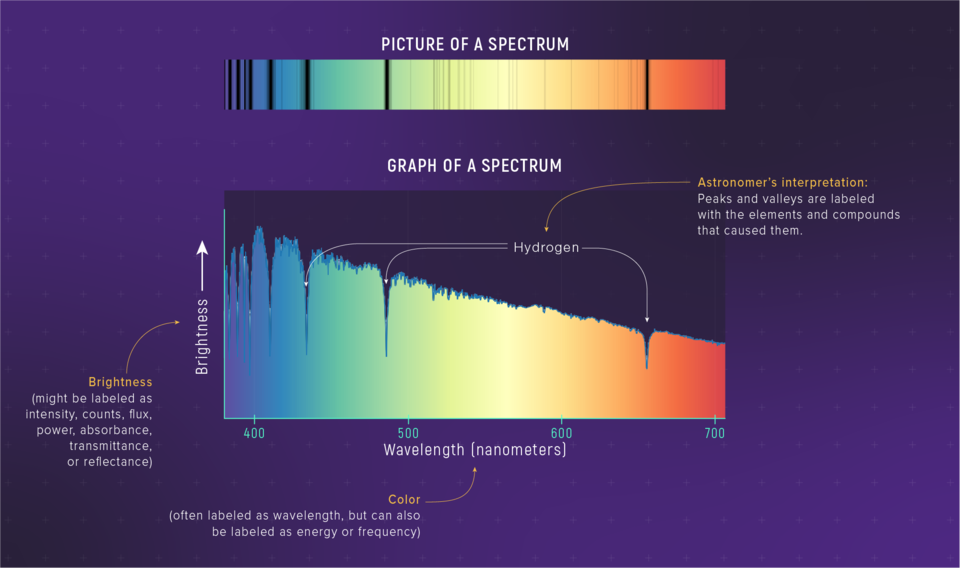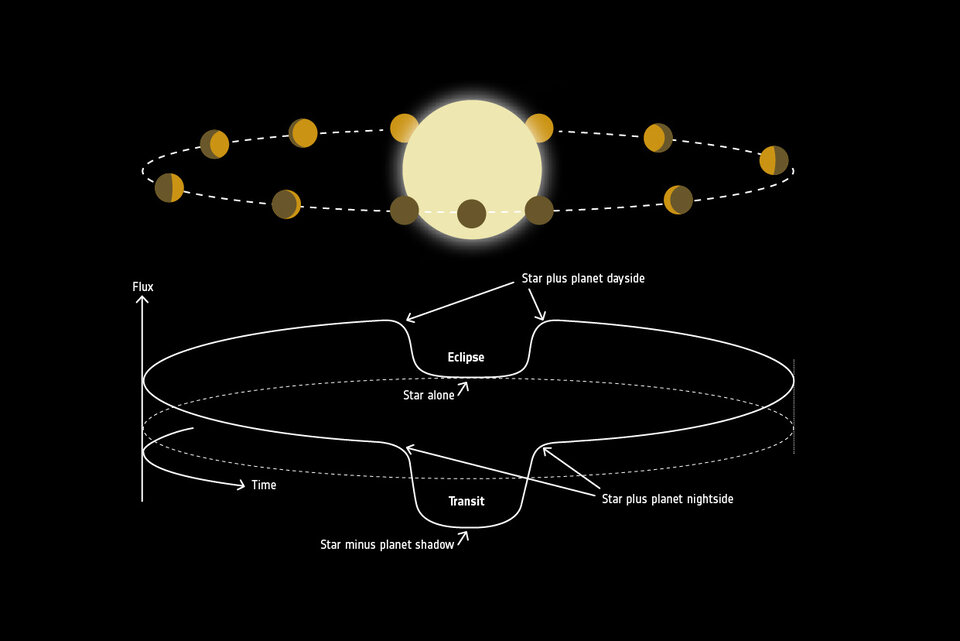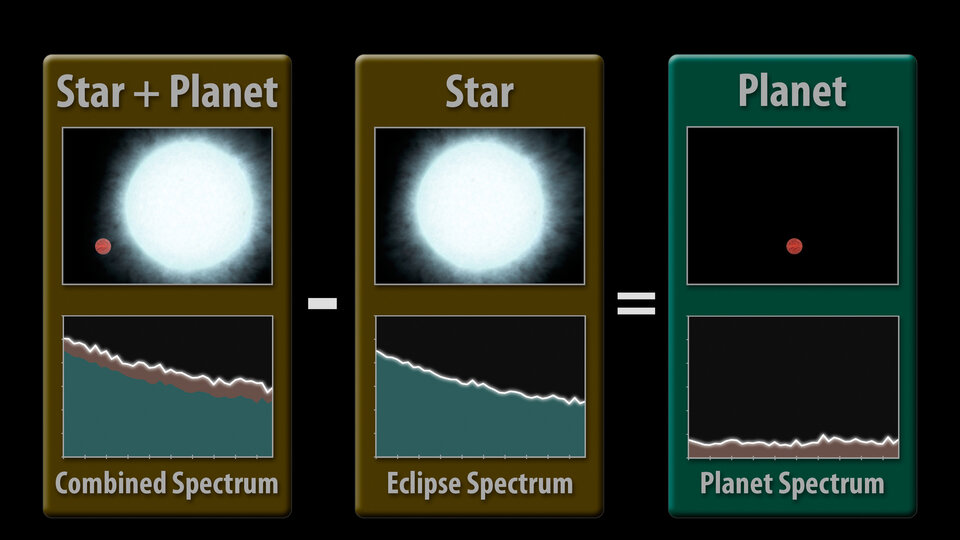Studying exoplanet atmospheres with Ariel
ESA’s Ariel mission will study the atmospheres of planets outside our Solar System. Ariel’s instruments include spectrometers and photometers made especially for this purpose. The mission will find out what the atmospheres of exoplanets are made of and what they are like.
Spectroscopy – how to read a star’s signature

Astronomers learn about the properties of stars and planets by studying their light. But how can the light we receive reveal information about the composition of an exoplanet’s atmosphere, temperature, or even its magnetic field?
The key is spectroscopy – the splitting of light into different wavelengths using a prism. This principle is the same as that behind the creation of rainbows, where light from the Sun is split into its different wavelengths inside rain droplets; we see these different wavelengths as different colours. Likewise, light coming from stars can be passed through a prism and split into its different wavelengths. Some of these wavelengths – such as those in the infrared and UV parts of the spectrum – are invisible to our eyes, but detectors are able to measure them.
Some starlight is absorbed at specific wavelengths by molecules and atoms in a star’s outer layer. This means that the spectrum of a star has some places where light is ‘missing’; these regions are called absorption lines.

Absorption lines can tell us a lot about the atmospheres of stars. Their location in a spectrum reveals what type of particles absorbed the light and so we can learn what stars are made of. The state in which these particles exist in the atmosphere of a star informs us about the temperature of that star: cooler stars have molecules in their atmospheres, hotter stars have atoms and the hottest of stars only have ions – atoms with missing electrons. Studying spectra can thus reveal details on the stellar temperature.
Astonishingly, spectra can also tell us whether stars have magnetic fields. In the presence of a magnetic field, single absorption lines are split into several thinner lines. By studying these fine lines, astronomers can work out the strength of the magnetic field because stronger magnetic fields spread the thin lines out more.
How will Ariel use spectroscopy?

Spectroscopy can tell us a lot about the outer layers of stars but is also used to study the atmospheres of planets orbiting those stars.
Transmission and eclipse spectroscopy
Some exoplanet systems are oriented such that we can see a planet pass in front of its host star as it orbits. When this happens, we notice a slight dimming of the star as the planet blocks some starlight. During such a transit, part of the starlight passes through the atmosphere of the planet (if the planet has one). This changes the spectrum of starlight that Ariel measures; the resulting spectrum is that of the star combined with that of the planet’s atmosphere. We call this method of exploring exoplanets ‘transmission spectroscopy’.
During ‘eclipse spectroscopy’ the spectrum of starlight is measured when the orbiting planet is completely hidden by its star. The spectrum shows the star alone as no light passes through the planet’s atmosphere.
By subtracting the spectrum in eclipse from that in transit, astronomers can see the absorption lines resulting only from the planet’s atmosphere. This can reveal what the atmosphere is made of, its temperature, the presence of a magnetic field, and more.
Time evolution of atmospheres
Ariel will look at some stars more than once during its lifetime, each time measuring spectra during planet transit and eclipse. By performing the same observations, astronomers can track any changes over time. Astronomers will use these sequential observations to understand exoplanet weather patterns and study cloud distributions.
What other techniques will Ariel use to explore exoplanets?

Phase curve
The phase curve method does not rely on measuring spectra of stars. Instead, astronomers measure the total light received from the star and the planet. In the same way that the Moon goes through different phases as it moves around Earth, planets go through phases as they move around their host stars – sometimes we see the full disk, sometimes a crescent, and sometimes nothing at all. Studying how the total brightness changes while a planet orbits its star helps us understand how reflective planets are and can even reveal whether a planet has a cloudy or diffuse hazy atmosphere.
Eclipse mapping
Another method looks at a planet right before and after it is eclipsed by its star. By studying the change in received light as different parts of the planet are covered by the star, astronomers can study various properties of exoplanets such as their shape.



